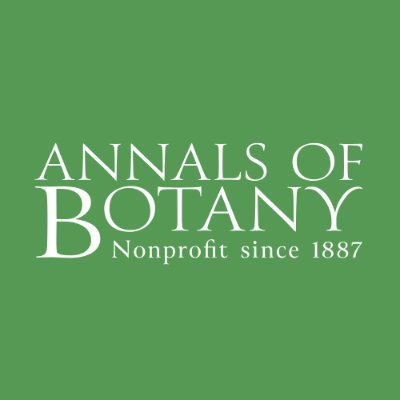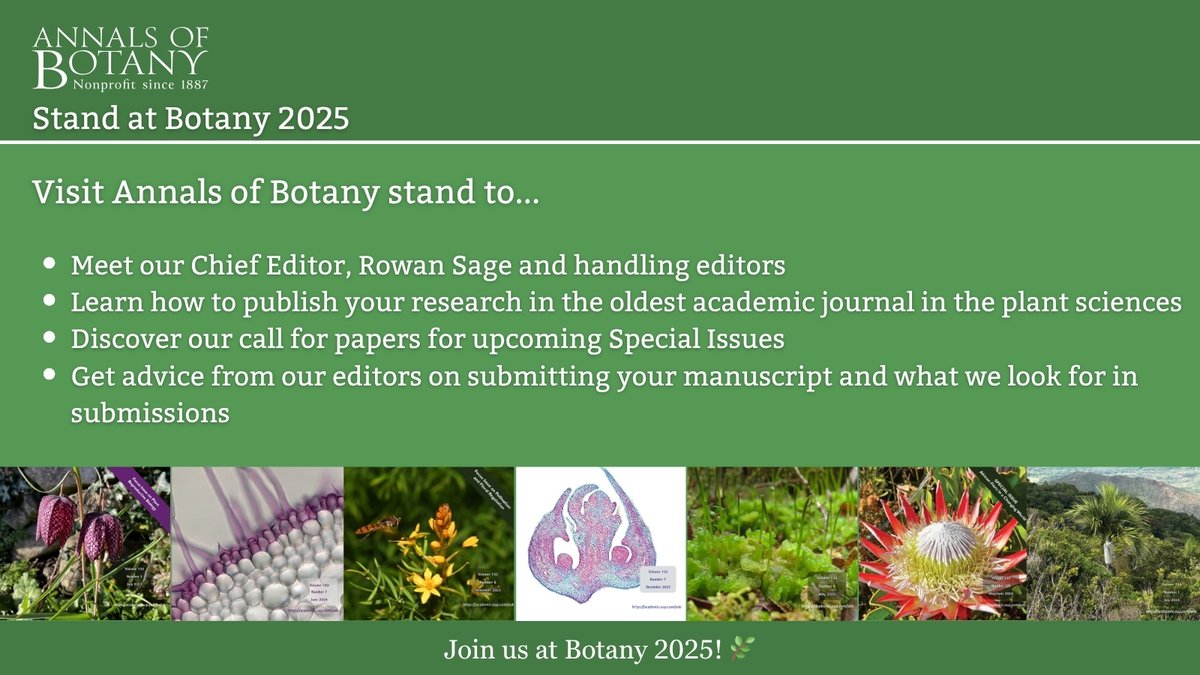
Annals of Botany
@annbot
Followers
5K
Following
222
Media
2K
Statuses
6K
Twitter feed for Annals of Botany articles. For more Botany see our blog @botanyone
Joined September 2017
🌿🌊Annals of Botany invites submissions to a new Special Issue on "Macroalgae and ecosystem services", edited by AoB editors Mick Hanley and Kira Krumhansl and guest editor Louise Firth. (1/3)
1
1
15
RT @SiobhanLeachman: So very proud of this publication. It all started 'cause a group of us Wiki editors wanted to educate participants of….
0
5
0
🌴 Heading to Botany 2025 in Palm Springs?. Come visit the @annbot booth and meet our Chief Editor!. 📚 Get tips on publishing your research.📝 Learn what we look for in submissions.📢 Explore our Special Issue open calls. Let’s talk plant science. See you there!. #PlantScience
0
0
4
🌱 Don’t miss Dmitry’s talk “Cone morphology, development, and sporadic structural gynodioecy in Gnetales with an emphasis on Ephedra species from Israel” at #Botany2025 on July 29 at 8 am! (10/10). #PlantScience #Botany #Gnetales.
0
0
0
🎉Meet Dmitry Sokoloff, session chair & speaker at the @annbot sponsored symposium “Evolutionary history of the Gnetales” during Botany 2025, and researcher at Tel Aviv University. Get to know his passion for evo-devo biology 🧵.Se alt text for the full answers 1/10
1
1
5
🔥ADVANCE ACCESS🔥: Nuances of floral mimicry in Queen of Sheba orchids.
academic.oup.com
AbstractBackground and Aims. Floral deception can range from finely tuned mimicry of specific rewarding plants (Batesian mimicry) to a general resemblance
0
2
8
🌼This work helps clarify a long-standing confusion in terminology and developmental genetics and invites us to see the capitulum not as a compressed branch, but as a unique, flower-like innovation in the plant kingdom. (8/8). 👉 #PlantScience #Botany.
academic.oup.com
AbstractBackground and Aims. The capitulum of Asteraceae has traditionally been interpreted as a condensed raceme. However, morphological studies challenge
0
0
0

















